Cabo de Gata, Spain
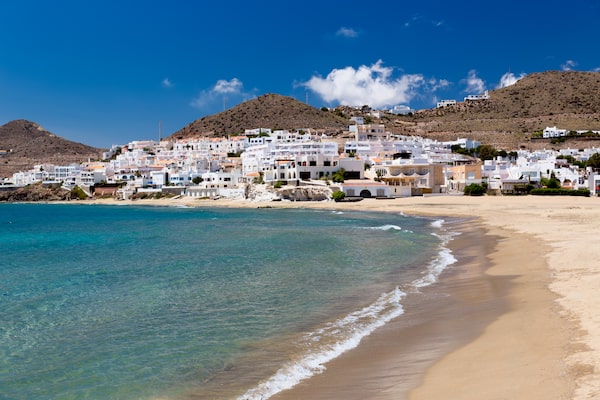
Cabo de Gata features some of Spain's most beautiful beaches.fisfra/iStockPhoto / Getty Images
If you can find anyone old enough to remember the Costa del Sol before Spain’s 1960s tourist boom, they’d probably say it looked a bit like Cabo de Gata. Some of the country’s most beautiful and least crowded beaches are strung between the grand cliffs and capes east of Almería city, where dark volcanic hills tumble into a sparkling turquoise sea. Though Cabo de Gata is not undiscovered, it still has a wild, elemental feel, and its scattered fishing villages (remember those?) remain low-key. Running here is a solitary pleasure and particularly recommended off-season (October to April) when the weather remains mild, but the tourists stay away. You can run all the way along the coast in a multi-day run from Retamar in the west to Agua Amarga in the east (61 kilometres) or split the route into shorter segments, setting out from various towns en route. Whitewashed San José is the most convenient base.
- Start: Retamar
- End: Agua Amarga
- Distance: 10 – 61 kilometres
- More info: www.cabogataalmeria.com
Golfo di Orosei, Sardinia, Italy
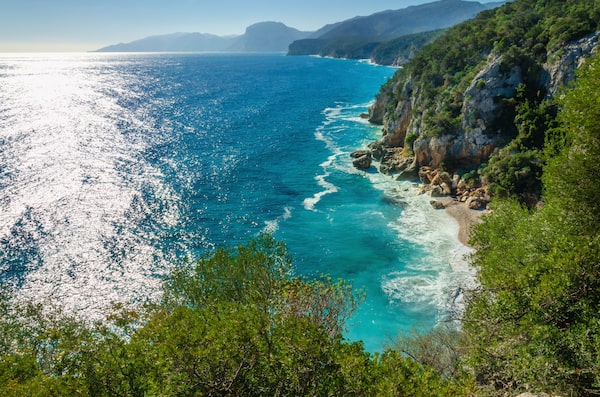
The Golfo di Orosei, on the island of Sardinia.Anna_Jedynak/iStockPhoto / Getty Images
In a country with surprisingly few coastal trails, Sardinia’s Golfo di Orosei adds a new dimension. This is the Mediterranean as modern tourists rarely see it: untamed, isolated and wonderfully untarnished. Whereas runners on Amalfi Coast and Cinque Terre trails require deft footwork to sidestep the steady streams of enthusiastic hikers, athletes in this roadless region have only sheep, eagles and the odd whistling farmer for company. The set of trails that run along Sardinia’s east coast between the villages of Cala Gonone and Baunei are usually hiked in four days. But there’s no reason why strong, adventurous, well-prepared runners can’t complete the 45 kilometres in just one. Note the area’s relative isolation and purchase a map, bring plenty of water and start early. Several beach restaurants and a rifugio provide various eating and sleeping options along the way.
- Start: Cala Gonone
- End: Baunei
- Distance: 45 kilometres
Blencathra
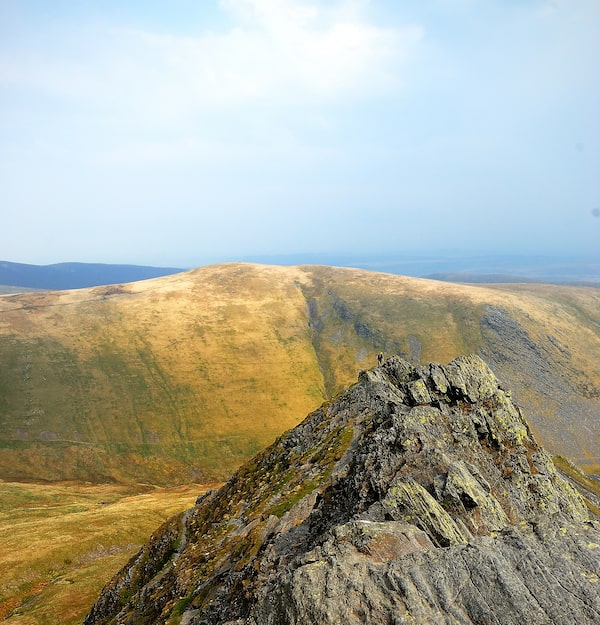
The Sharp Edge of Blencathra, in Cumbria, England.DrewRawcliffe/iStockPhoto / Getty Images
Multi-headed Blencathra (868 metres) is the third summit on most Bob Graham Rounds and a cult favourite with locals. This is also a classic Lake District fell run in that the distance isn’t big, but with 773 metres of ascent, it’ll take some time and your legs will feel it. A testing climb up Mousthwaite Comb soon rewards with big views. From Scales Beck there’s a choice of the thrilling Sharp Edge or the more relaxed, direct route to the summit, where you’ll be rewarded with huge views of the Lakes in all their glory (weather allowing). Then tighten your shoelaces for an exhilaratingly speedy descent via Scales Fell.
- Start/End: White Horse Inn, Scales
- Distance: 7 kilometres
- More info: www.lakedistrict.gov.uk
Velká Kunratická, Prague, Czech Republic
You might wonder what a race with a full course less than 2 miles long is doing in a list of ‘epic’ races. The answer is simple: hills – really steep ones; also mud and streams; and beautiful forest scenery; and the kind of weather you’d expect in central Europe on the first Sunday in November. The race takes place in the Kunratice Forest in Prague’s Modřany district (where the great King Wenceslas IV died hunting in 1419). The full course involves three stream-crossings and three steep ascents, including the notorious Hrádek slope. First run in 1934, the race is considered such a classic that the president of the International Olympic Committee handed out medals for its 50th anniversary. Many categories cover only a shorter version of the route, and places in the full version are quickly taken. The record for the full course – 10:58.9 minutes – has stood since 1979.
- Start/End: Kunratice Brook Valley
- Distance: 3 kilometres
- More info: www.velkakunraticka.cz
Portballintrae Causeway Loop
Not all runs take in a Unesco World Heritage Site. This short outing along Antrim’s Causeway Coast takes you along windswept beaches and dunes to the otherworldly Giant’s Causeway, an expanse of hexagonal stone columns that blanket the coast here. This Causeway is a tourist honeypot, but take to the coastal path and run early or late in the day and you may just get the place to yourself. The route starts on the beach in workaday Portballintrae, crossing the Bush River (which feeds the rill at the Bushmills Distillery just upstream) before you get to the soft sands of Bushfoot Strand. Then follow a cliff-top path to the Giant’s Causeway, dropping down to sea level as you run between the outcrops of weirdly regular rock. Bear right by ‘The Organ’ and up the steep steps of the Shepherds Path to loop back towards Portballintrae, following the coastal railway and dunes.
- Start/End: Beach Rd, Portballintrae, Co Antrim
- Distance: 9 kilometres
- More info: www.walkni.com
The Llŷn Peninsula
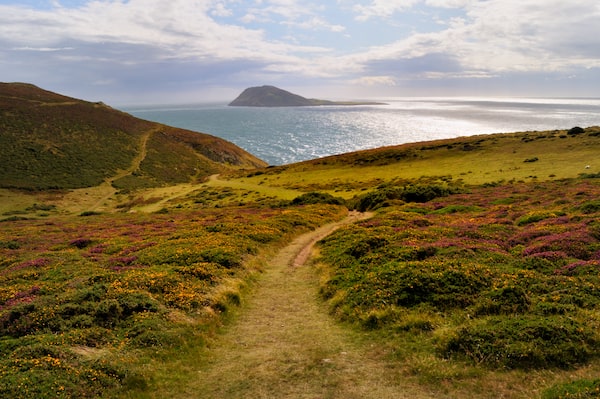
A view of Bardsey Island, from the hills above Aberdaron on the Llŷn Peninsula, North Wales.AlasdairJames/iStockPhoto / Getty Images
The Llŷn Peninsula extends into the sea west of Snowdonia. It is a particularly rural, quaint and quiet spot at the very fingertip of the peninsula, where a huge carpet of white sand is laid out in front of the village of Aberdaron. Head west, following the coastal path round to Pen y Cil, the southwestern point of the headland, looking out for dolphins and seals. Continue north to Braich y Pwll, the westernmost point on the North Walian mainland, admiring Bardsey Island with its 19th-century lighthouse (the tallest square-towered one in the U.K.), and imagining medieval pilgrims rowing across to visit the 1500-year-old monastery. Archaeological finds prove that the island has been inhabited for at least 4000 years. Now either retrace your steps or follow the minor road back.
- Start/End: Aberdaron
- Distance: 9.6 kilometres
- More info: www.llyn.info
Lyon, France
Lyon has two picturesque rivers (the Rhone and the Saône) set beneath strategic heights where the city was founded circa 43 BC. A memorable route combines waterfront scenery with a rewarding (but challenging) climb up Fourvière hill to a stunning lookout near the city’s magnificent basilica. Start on the east bank of the Rhone, just north of the Pont Winston Churchill, cross the river at the Pont de la Guillotière and cut through the grand Place Bellecour, Lyon’s biggest plaza, en route to the pedestrian-only Passerelle St-Georges which traverses the Saône. Run up the west bank of the Saône. After passing three bridges, turn left at the fourth and follow Montée St-Barthélémy as it climbs uphill. Take the entrance to Parc des Hauteurs and wind your way to the top. You’ll emerge at the base of the Basilique Notre Dame de Fourvière, with sublime views over one of France’s loveliest cities.
- Start: Pont Winston Churchill
- End: Basilique Notre Dame de Fourvière
- Distance: 6 kilometres
Košice Marathon, Slovakia
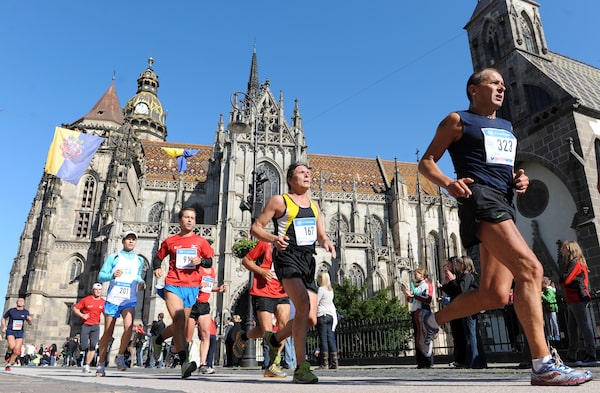
Marathon runners pass Saint Elizabeth's Cathedral in Košice on Oct. 3, 2010.SAMUEL KUBANI/AFP via Getty Images
This race takes place in Slovakia’s ‘second city’ and is one of the oldest marathons in Europe, dating back to the 1920s. The first time it was ever held only eight runners took part, but nowadays it’s a popular event and regarded as one of the fastest marathon routes in the world due to its flat roads. Also known as the International Peace Marathon, the course snakes through various examples of gothic and Soviet architecture. These days, the event aims to raise money for Slovakian children living with cancer.
- Start/End: Hlavná Street, Košice
- Distance: 42 kilometres
- More info: kosicemarathon.com
Reproduced with permission from Epic Runs of the World, © 2019 Lonely Planet; lonelyplanet.com
Live your best. We have a daily Life & Arts newsletter, providing you with our latest stories on health, travel, food and culture. Sign up today.